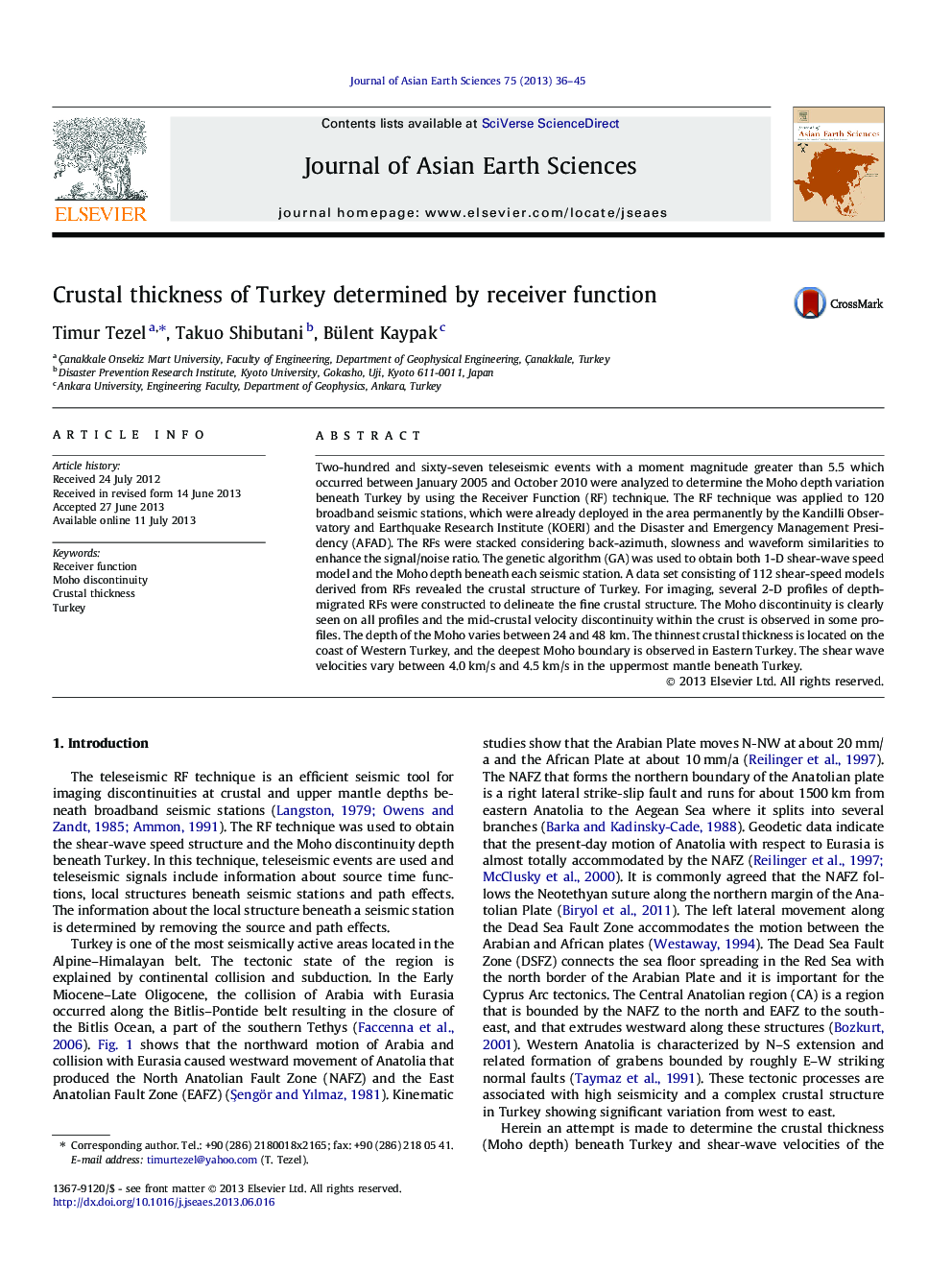| Article ID | Journal | Published Year | Pages | File Type |
|---|---|---|---|---|
| 4730940 | Journal of Asian Earth Sciences | 2013 | 10 Pages |
•New Moho depth map is presented.•Crustal thickness is varying between 24 and 48 km.•The thinnest crust observed at the western coast of Anatolia.•The thickest crust observed at the eastern Anatolia.•Uppermost mantle S-wave speed is lower than world average.
Two-hundred and sixty-seven teleseismic events with a moment magnitude greater than 5.5 which occurred between January 2005 and October 2010 were analyzed to determine the Moho depth variation beneath Turkey by using the Receiver Function (RF) technique. The RF technique was applied to 120 broadband seismic stations, which were already deployed in the area permanently by the Kandilli Observatory and Earthquake Research Institute (KOERI) and the Disaster and Emergency Management Presidency (AFAD). The RFs were stacked considering back-azimuth, slowness and waveform similarities to enhance the signal/noise ratio. The genetic algorithm (GA) was used to obtain both 1-D shear-wave speed model and the Moho depth beneath each seismic station. A data set consisting of 112 shear-speed models derived from RFs revealed the crustal structure of Turkey. For imaging, several 2-D profiles of depth-migrated RFs were constructed to delineate the fine crustal structure. The Moho discontinuity is clearly seen on all profiles and the mid-crustal velocity discontinuity within the crust is observed in some profiles. The depth of the Moho varies between 24 and 48 km. The thinnest crustal thickness is located on the coast of Western Turkey, and the deepest Moho boundary is observed in Eastern Turkey. The shear wave velocities vary between 4.0 km/s and 4.5 km/s in the uppermost mantle beneath Turkey.
